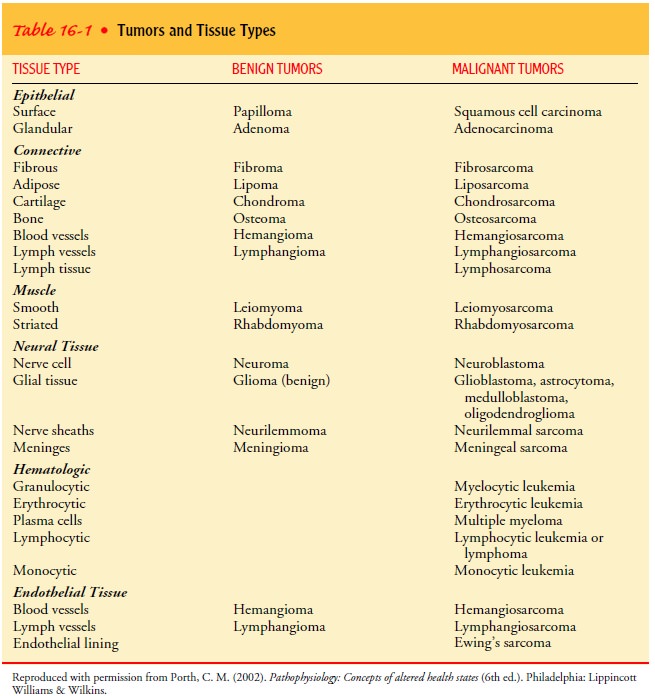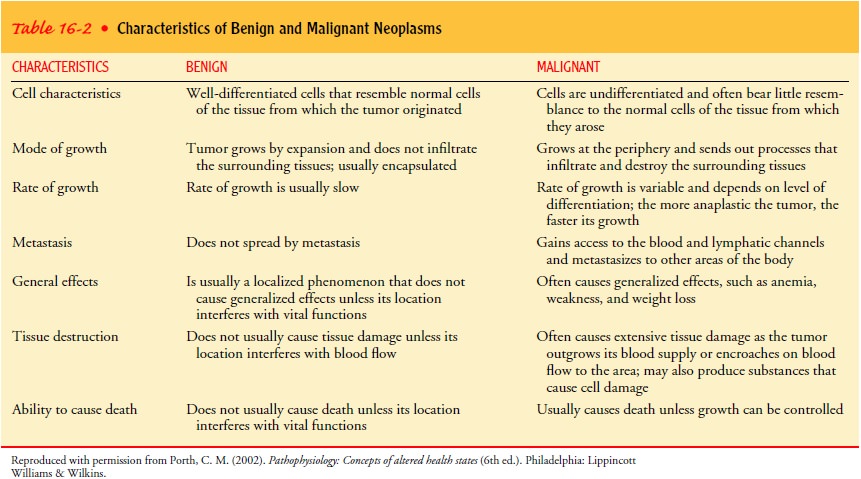Chapter: Medical Surgical Nursing: Oncology: Nursing Management in Cancer Care
Proliferative Patterns - Pathophysiology of the Malignant Process
PROLIFERATIVE
PATTERNS
During the life span, various body tissues normally experience periods
of rapid or proliferative growth that must be distinguished from malignant
growth activity. Several patterns of cell growth exist: hyperplasia,
metaplasia, dysplasia, anaplasia, and neoplasia (see Glossary).
Cancerous cells are described as malignant neoplasms. They demonstrate uncontrolled cell growth that follows no physiologic demand. Benign and malignant growths are classified and named by tissue of origin, as described in Table 16-1.

Benign and malignant cells differ in many cellular growth
characteristics, including the method and rate of growth, ability to
metastasize or spread, general effects, destruction of tissue, and ability to
cause death. These differences are summarized in Table 16-2. The degree of
anaplasia (lack of differentiation of cells) ultimately determines the
malignant potential.

Related Topics